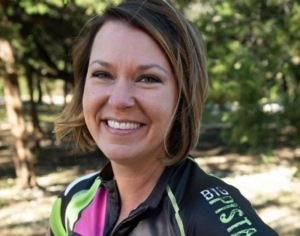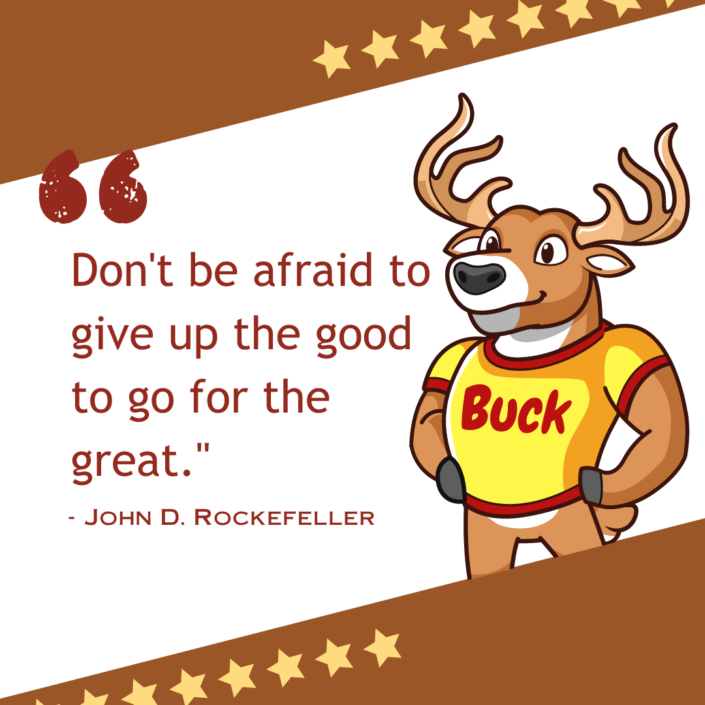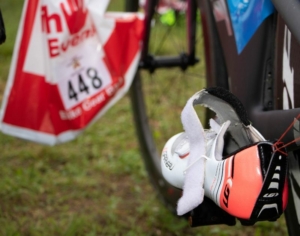Our 2019 Kerrville Ambassadors are experts on all things Kerrville Tri!
Who better than to ask for race advice than an experienced Kerrville triathlete? Feel free to get to know the 2019 Kerrville Tri Ambassadors to ask any and all questions you may have about the 2019 Smokin’ Good Tri! Plus, if you’re new to triathlon, seeing a familiar face on race morning will help ease some of your nerves!
Michelle Bonathan

Michelle Bonathan – Kerrville Tri Ambassador
In addition to being a triathlete I am a dog mom of two, and wife to an ultra runner. I love being a Kerrville Tri Ambassador because it gives me a platform to talk to athletes of all ages, distances, and speeds. I was not an athlete growing up and thought the idea of triathlons was ridiculous, but when I finished my first race (on a dare!) the sport immediately found a special place in my heart. The Kerrville Tri Festival is amazing because you get to see athletes out for the long haul doing the half, speedsters flying by, and the smile of a triathlete at their first finish line all at the same race. Connect with her on Facebook or Instagram
Annette Kobus

Annette Kobus – Kerrville Tri Ambassador
I’ve always loved the venue and it’s always on my birthday weekend! I’ve raced the Sprint and Quarter distances and when I wasn’t racing, I volunteer every year for this race. The past couple of years I have not raced because of bone-on-bone arthritis, but this year I’m sporting total knee replacements. I’m planning to again race the Sprint (yay Annette!) and of course, I’ll volunteer on Sunday for the Half. When my knees are more stable, I really want my first Half to be at Kerrville! Connect with her on Facebook
Susan Oyler

Susan Oyler – Kerrville Tri Ambassador
I’m a military wife, mother, engineer and age-group triathlete. I am a natural team builder and love being part of the Kerrville Triathlon team and getting to connect with other triathletes. 2018 was the first time I participated in the Kerrville Triathlon Festival and I was HOOKED! It is a top-notch event! This race has everything a triathlete wants in a race: a gorgeous venue and a challenging course! Connect with her on Instagram
Barbara Bussey

Barbara Bussey – Kerrville Tri Ambassador
I began my running/tri career just trying to get an “A” in my PE class in nursing school. Luckily for me, the exercise stuck (and yes, I got the “A”). That was back in 2000, since then I have run 12-15 half marathons, more 10Ks than I can count completed an unknown number of sprint/super-sprint tris and this September, I will complete my 2nd 70.3 in Kerrville.
Running and triathlon feels like freedom to me. Freedom from worries, freedom to truly enjoy the outdoors, freedom to challenge myself to be better. Exercise has also brought me closer to my daughter, she seems to have caught the same bug I did all those years ago, and now we challenge each other to reach greater achievements than we thought possible. On the days when I really just do not feel it, I remember a saying I heard once: the longest distance in running, is the six inches in between your ears! I know that anyone can master those six inches, one stride or tri at a time!
Cat Adkins

Cat Adkins – Kerrville Tri Ambassador
5 years ago, I decided to give triathlon a try. I’d only participated in about 5 triathlons before Kerrville but it quickly became my favorite. I fell in love with the triathlon community that weekend. It was wonderful knowing that everyone you passed was there for the same reason. It’s hard to not make friends quickly when you spend a weekend with people you have so much in common with. 5 years later, all the people I met are close friends and the circle just keeps growing. I have since bullied dozens of athletes to do their 1st tri with me. It’s hard for people to tell me they’re intimidated to do something that I’m capable of. I eat too much, drink too much, and party too hard, so people usually think, “If this mess can do it, certainly I can too!” What can I say? I’m inspiring. Connect with her on Facebook or Instagram
Kristen Farwell

Kristen Farwell – Kerrville Tri Ambassador
I am relatively new to triathlon, just finishing my third season. Until this past year, I had only done Sprints and Kerrville 2018 was my first Olympic. It’s my second year racing the event and I can’t express how much I love this event. From beginning to end, the event is well organized, well supported and on the day of, executed flawlessly. It’s my favorite course and already have my hotel reservation for 2019. I would love to help share the love, especially for those who might be new and intimidated by an unfamiliar or out-of-town race. I pride myself on being outgoing and helpful. Connect with her on Instagram
Mary McDonald

Mary McDonald – Kerrville Tri Ambassador
I’ve raced triathlons both big and small all over the USA for many years and love that the Kerrville Tri is right here in Texas! I love being an ambassador for the Kerrville Tri because it is a race with personality! Race distances for everyone and a fun old school atmosphere. And the fun doesn’t stop after you cross the finish line! Cool off by floating down the river and enjoying the after-party! Connect with her on Twitter or Instagram
Mark Schnur

Mark Schnur – Kerrville Tri Ambassador
I love the Kerrville Tri because it is part of a fun weekend in Kerrville, held on a scenic course, close to where I live in San Antonio, and is so well supported by the community! I am a great ambassador because I have over 30 years of experience in racing triathlons (since 1987), and I have coached and trained with many successful triathletes and because I love the Kerrville Tri. Connect with him on Instagram
Reach out to your 2019 Smokin’ Good Tri Ambassadors for any questions you have before race day! Also, get some insider info to help you decide which distance is perfect for you to complete Kerrville Tri with us on September 28th and 29th!




























